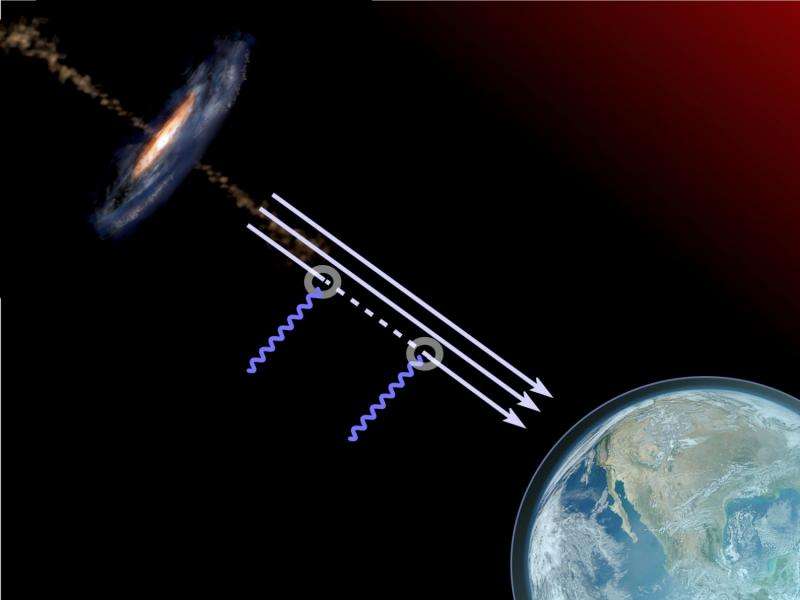Dark matter does not contain certain axion-like particles

Researches at Stockholm University are getting closer to light dark-matter particle models. Observations rule out some axion-like particles in the quest for the content of dark matter. The article is now published in the Physical Review Letters.
Physicists are still struggling with the conundrum of identifying more than 80 percent of the matter in the universe. One possibility is that it is made up of extremely light particles that weigh less than a billionth of the mass of an electron. These particles are often called axion-like particles (ALPs). Since ALPs are hard to find, the researchers have not yet been able to test different types of ALPs that could be a constituent of dark matter.
For the first time, the researchers used data from NASA's gamma-ray telescope on the Fermi satellite to study light from the central galaxy of the Perseus galaxy cluster in the hunt for ALPs. The researchers found no traces of ALPs and for the first time, the observations were sensitive enough to exclude certain types of ALPs (ALPs can only constitute dark matter if they have certain characteristics).
ALPs cannot be detected directly, but there is a small chance that they transform into ordinary light and vice versa when traveling through a magnetic field. A research team at Stockholm University used a very bright light source, the central galaxy of the Perseus galaxy cluster, to look for these transformations. The gamma radiation from this galaxy could change its nature to ALPs while traveling through the magnetic field that fills the gas between the galaxies in the cluster.
"The ALPs we have been able to exclude could explain a certain amount of dark matter. What is particularly interesting is that with our analysis we are reaching a sensitivity that we thought could only be obtained with dedicated future experiments on Earth", says Manuel Meyer, post-doc at the Department of Physics, Stockholm University.
Searches for ALPs with the Fermi telescope will continue. More than 80 percent of the matter in the universe is unidentified. Dark matter shows itself only through its gravity, neither absorbing nor radiating any form of light.
More information: M. Ajello et al. Search for Spectral Irregularities due to Photon–Axionlike-Particle Oscillations with the Fermi Large Area Telescope, Physical Review Letters (2016). DOI: 10.1103/PhysRevLett.116.161101
Journal information: Physical Review Letters
Provided by Stockholm University




















